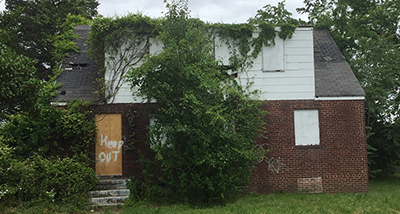
‘Zombie’ Properties Decline as Foreclosure Moratorium Lifts

ATTOM, Irvine, Calif., issued its third-quarter Vacant Property and Zombie Foreclosure Report showing 1.3 million residential properties in the United States sit vacant.
The report said 215,495 properties are in the process of foreclosure in the third quarter, down 3.7 percent from the second quarter and down 0.2 percent from a year ago. Among those properties, 7,538 sit vacant in the third quarter, down quarterly by 6.7 percent and annually by 5.3 percent. The portion of pre-foreclosure properties that have been abandoned into zombie status dropped slightly, from 3.6 percent in the second quarter of 2021 to 3.5 percent in the third quarter of 2021.
ATTOM said among the nation’s total stock of 98.4 million residential properties, the portion represented by zombie foreclosures remains miniscule: Just one of every 13,060 homes in the third quarter sit empty in the foreclosure process, down from one in 12,256 in the second quarter and from one in 12,486 a year ago.
ATTOM Chief Product Officer Todd Teta said the third-quarter zombie foreclosure numbers reflect one of many measures showing how strong the U.S. housing market remains, but also one likely to face a downturn to varying degrees across the country over the coming year. He cautioned the number of foreclosures – and with it, the number sitting vacant – is almost certain to increase because the federal government recently lifted a 15-month moratorium that had prevented lenders from taking back properties from homeowners who fell far behind on mortgage payments during the pandemic. An estimated 1.5 million to 2 million homeowners were in some kind of forbearance when the moratorium ended in July 2021.
“Vacant properties in foreclosure, and the resulting potential for neighborhood decay, continue to be a non-issue overall in most of the country. But that could easily change over the coming months as lenders are now free to take back properties from delinquent homeowners,” Teta said. “How much, how fast and where that happens will depend on how different banks approach the situation. Some may decide to vigorously pursue foreclosures to recoup losses from the pandemic while others give homeowners more time to get back on their feet. But it’s hard to imagine that zombie foreclosures will continue be so few and far between across the national landscape.”
Other report findings:
–7,538 residential properties facing possible foreclosure were vacated by their owners nationwide in the third quarter, down from 8,078 in the second quarter and from 7,961 a year ago. The number decreased, quarter over quarter as well as year over year, in 31 states.
–Among states with at least 50 zombie foreclosures during the third quarter, the biggest decreases from the second quarter to the third quarter were in Maryland (down 39 percent, from 151 to 92). New York continued to have the highest number of zombie properties in the third quarter (2,053), followed by Ohio (939), Florida (912), Illinois (805) and Pennsylvania (366).
–Vacancy rates for all residential properties in the U.S. declined to 1.35 percent in the third quarter (one in 74 properties), from 1.42 percent in the second quarter (one in 70) and 1.58 percent a year ago (one in 63).
–Among 162 metropolitan statistical areas with at least 100,000 residential properties and at least 100 properties facing possible foreclosure, the highest zombie rates in the third quarter of 2021 are in Portland, Ore. (13.7 percent); Fort Wayne, Ind. (12.9 percent); Detroit (11.9 percent); Cleveland (11.8 percent); and Honolulu (11.3 percent).
–Among the 27.5 million investor-owned homes throughout the U.S. in the third quarter, 933,500, or 3.4 percent, are vacant. The highest levels of vacant investor-owned homes are in Indiana (6.9 percent), Tennessee (6.1 percent), Kansas (5.9 percent), Oklahoma (5.4 percent) and Ohio (5.2 percent).
–Among the roughly 4,800 bank-owned homes in the U.S. during the third quarter, 17.8 percent are vacant. In states with at least 50 bank-owned homes, the largest percentages sitting vacant are in Kentucky (40.9 percent), Ohio (37.2 percent), Missouri (35.3 percent), Illinois (25.7 percent) and Michigan (24.2 percent).
–Highest zombie-foreclosure rates among counties with at least 500 properties in the foreclosure process during the third quarter are in Cuyahoga County (Cleveland), Ohio (13.3 percent); Broome County (Binghamton), N.Y. (11.9 percent); Pinellas County (Clearwater), Fla. (11.4 percent); Onondaga County (Syracuse), N.Y. (10.6 percent) and St. Clair County, Ill. (outside St. Louis) (9 percent).
